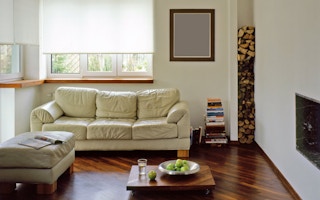It may be common knowledge that insulating the walls and attic of a home helps to keep it more energy efficient—allowing less heat and air-conditioned air to escape the home and therefore reducing utility bills. But it may come as a surprise that window coverings can also serve as a way of insulating a home.
Shades, draperies, blinds and other window treatments each have insulation factors to consider. In fact, updating window treatments can be a simple step in keeping the heat inside in the winter and outside in the summer—preventing energy from literally going out the window.
Here are the insulation factors to consider in the search for energy-saving window coverings:
1. The R-value of window treatments
When it comes to insulation, R-value is key. This measurement defines a window treatment’s ability to resist heat traveling through it. Therefore, window coverings with a higher R-value will help insulate a home better than those with a lower R-value.
On average, a window has an R-value of 0.9 to 3.0. Window coverings with a higher R-value help seal air gaps and create an effective barrier between a window and a room. This can mean an annual savings in energy use (and costs) of 10 to 25 per cent.
HouseLogic points out many energy-efficient window coverings possess insulating values that range from R-2 to R-4. Some of the top energy-efficient window coverings include:
- Cellular shades use cell pockets to trap air around windows so less heated air escapes the home. Cellular shades are perhaps the most energy-efficient window coverings available, and the level of insulation they provide varies depending on their pleat sizes and number of cell layers.
- Faux-wood shutters deliver a unique mix of style and function. They have a hollow core that traps air, similar to cellular shades.
- Draperies may include lining and interlining that helps shut out excess warm or cold air. Thermally lined draperies commonly have an R-value between R-3 and R-5.
- Exterior shades help prevent sunlight from entering a home. With exterior shades, homeowners can minimise harmful UV rays, reduce solar gain and lower a house’s interior temperature, helping to reduce the energy it takes to cool the home.
Look at the different types of window coverings and their respective R-values, to find high-quality window coverings that can help cut heating and cooling costs.
2. The installation process
Believe it or not, the installation process may impact the R-value of window coverings.
To maximise heating and cooling savings, homeowners should do their homework before beginning the work. Ensuring that window coverings fit perfectly will help maximise insulation, therefore reducing the energy it takes to heat or cool a home.
As part of a window coverings installation, homeowners should be sure to:
- Perform careful measurements. Measure horizontally, vertically and diagonally. While it’s important to measure before purchasing the window coverings, taking measurements again before installation will help ensure that mounting hardware is in the correct spots on the frame.
- Ensure the window is level. If a window is not level, the window treatments won’t be, either. Measure a window to ensure it is level, and if it’s not, it is possible to adjust the bottom rail weight to compensate for the window frame and minimise the risk of telescoping (when window treatments gather on one side or roll up).
- Install window coverings close to the glass. The closer the fit, the less air escapes, and the more energy is conserved.
- Carefully refer to the instructions. If homeowners have questions about window treatments, the instructions provide resources for further information.
Proper window coverings installation can make a world of difference in homes of all sizes, and over time, enable homeowners to optimise the value of window coverings.
3. The amount of air space between the glass layers of a window
Window coverings can help limit heat loss in winter and heat gain in summer. However, it also is important to note that the amount of space between the glass layers of a window may impact air leakage and infiltration in a home.
Using caulk and weather stripping around windows is a great way to limit air leakage, and they can be used in conjunction with window coverings to help further increase energy savings.
Lastly, homeowners can always layer window coverings on top of one another to increase insulation. This will reduce energy lost through a home’s windows and ensure these windows can make a bold, beautiful statement as well.
A window covering is more than just a fashion statement—it affects the comfort of a home as well as monthly utility costs. Examine the window treatment options that are available, and discover versatile window coverings that can provide form as well as function.
Katie Laird is the Director of Social Marketing for Blinds.com.











